Artnet Auctions
The Co-Founder of the Museum of Graffiti on Why Now Is the Time to Collect Street Art
Allison Freidin discusses the future of the Museum of Graffiti, and what sets street art apart from other genres.
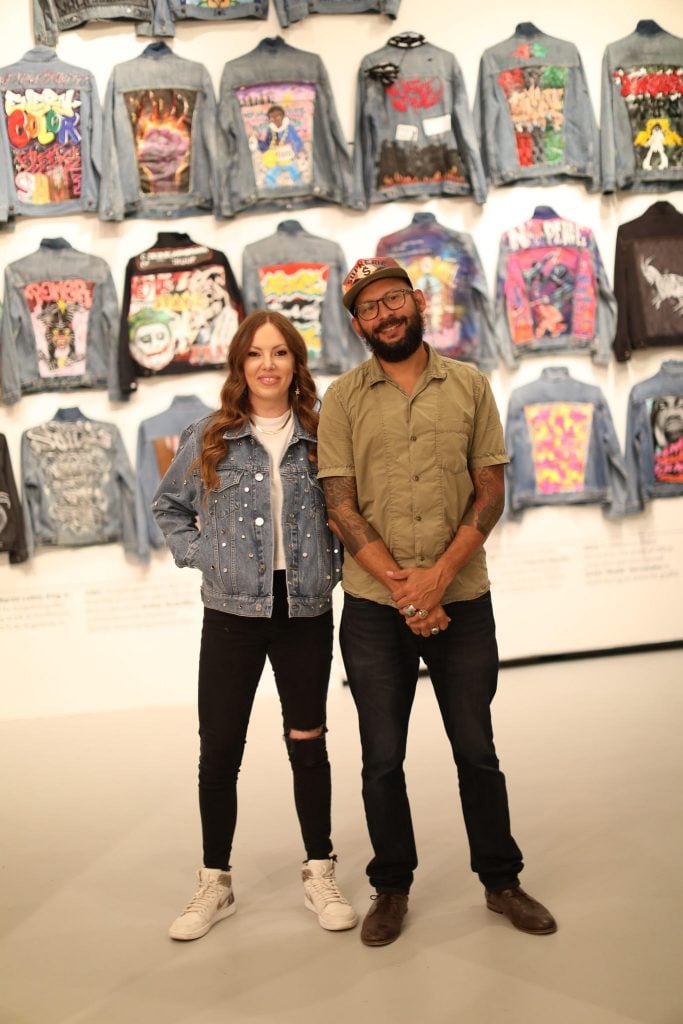
Allison Freidin discusses the future of the Museum of Graffiti, and what sets street art apart from other genres.

Artnet Auctions

Throughout the late 1960s and early ’70s, in major cities across the United States, youth began signing their names on public urban structures. Over the years, this lettering became more elaborate, eventually introducing distinctive details and decorative elements. Thus, a new art form was born.
More than half a century later, street art and graffiti are highly celebrated art forms, and are making a major splash on the primary and secondary markets. To celebrate this ever-growing genre, Artnet presents two exciting street-art sales. In our Street Level auction, bid on popular prints and bold original works. And, don’t miss the return of Buy Now with Buy Now: Street Level, an opportunity to purchase works from the biggest names in street art on demand—no bidding required!
To coincide with these initiatives, we sat down with Allison Freidin, co-founder of the Museum of Graffiti, the world’s first museum dedicated to the history of graffiti art, to learn about the impact of graffiti in the art market, and what’s next for the museum.
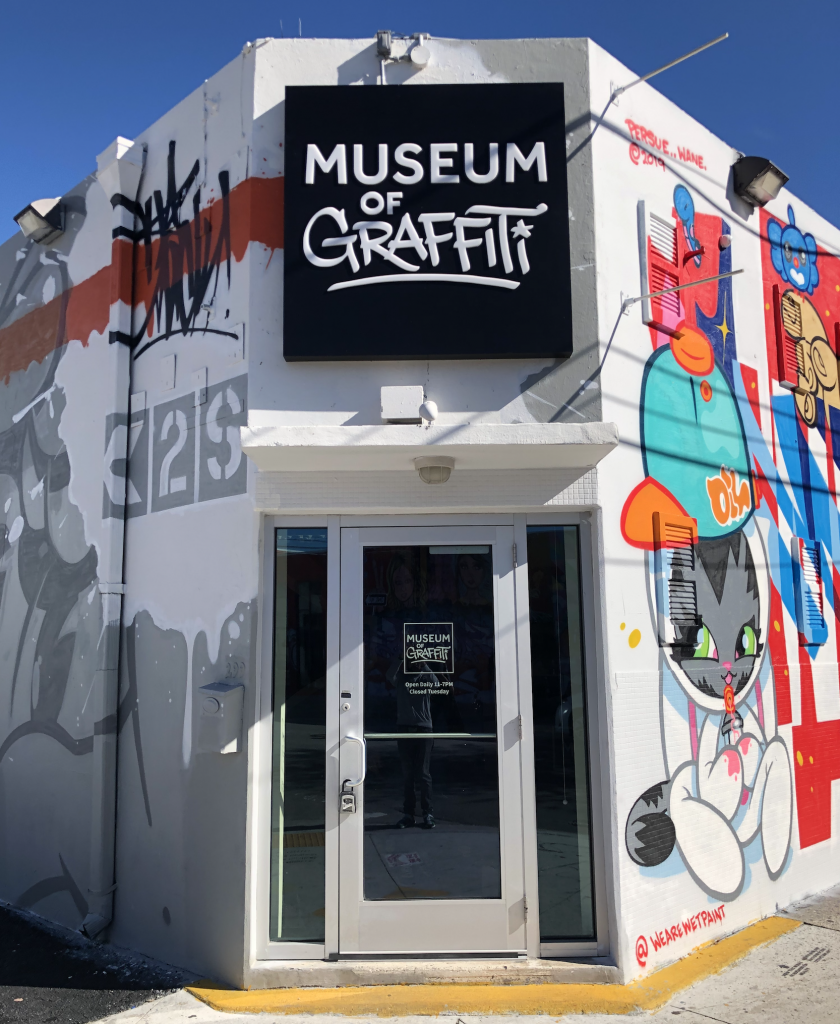
The Museum of Graffiti is located in the heart of Miami’s Wynwood neighborhood. Image courtesy of the Museum of Graffiti.
What differentiates street art from graffiti? And how do the evolutions of both art forms intersect?
We differentiate street art from graffiti by looking at the subject matter. Graffiti is really predicated on the formation of the letter. It is, above all, a text-based art form. Graffiti started as a teenage art movement, in which the youth were embellishing fonts and styles of writing that they were learning in school. Street art, meanwhile, is more mural based.
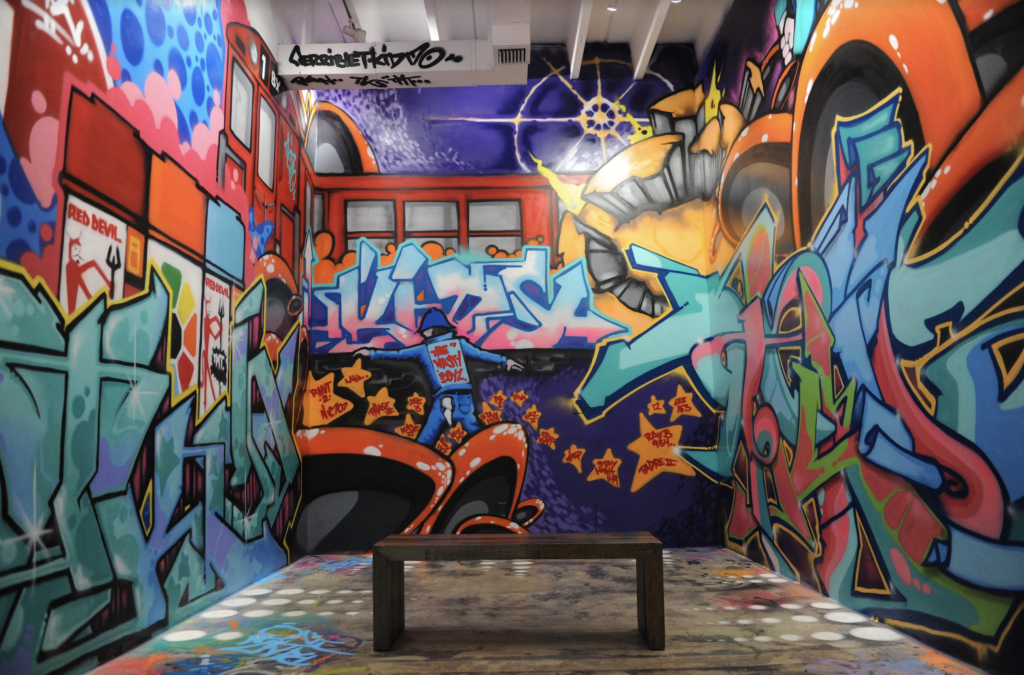
Image courtesy of the Museum of Graffiti.
For many street artists, including household names like Keith Haring, Banksy, and Shepard Fairey, art is inseparable from activism. How does street art function politically in a way that other fine art does not?
Graffiti artists intentionally put their work where the greatest number of people will see it: highways, train stations, walls in major metropolitan cities, etc. Putting art in the street as opposed to confining it in a museum or gallery makes the content available to the masses and imposes the content on the public. This is a very powerful tool that can be used to effectuate change by calling out the status quo or being the first to blow the whistle on inequities in our society. We see European artist Neils “Shoe” Muelman’s piece Great Again in Buy Now: Street Level. He created this piece during his first trip back to the United States after Donald Trump was defeated in the highly contested 2020 election. This followed a series of flags we exhibited in 2019 titled “UnUnited States,” “European UnUnion,” and “UnUnited Kingdom” as a means of expressing his displeasure with the turmoil of the times.
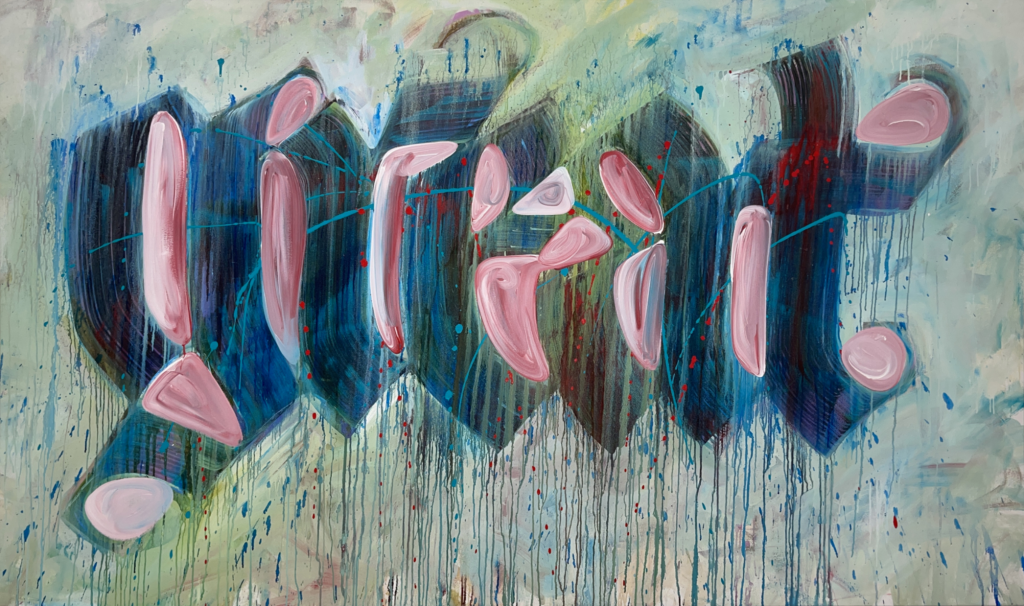
Niels “Shoe” Meulman, Great Again, 2021. Available for immediate purchase in Buy Now: Street Level.
In the late 1960s, graffiti was viewed as reckless vandalism, and often removed or covered up. Did these “vandals” see what they were doing as an art form initially? When did public perception of graffiti shift?
In the early days and even today, there are purists who only consider true graffiti to be letters surreptitiously painted in the streets. Artists like Cey Adams were prolific in seeing this work as something beyond illegal lettering styles in the street. He was extremely forward thinking about the impact of graffiti as a legitimate art form.
With a few exceptions, graffiti really sprang into the gallery world in the 1980s. Patti Astor, Joe La Placa, and some other very clever gallerists got behind the street and graffiti art movement. Pieces coming out of the ‘80s are now invaluable because they are not just artworks, they are artifacts of the beginning of a movement that will last forever.
Our work as the Museum of Graffiti is to continue educating people about graffiti and street art every day. It’s an ongoing job, and the work is not yet done. People still enter the museum each day thinking that graffiti artists are criminals and gang members. So the answer is that the perception started to shift in the 1980s, but we are still having to work today to undo the harsh stigmas created by government propaganda and the media around aerosol art.
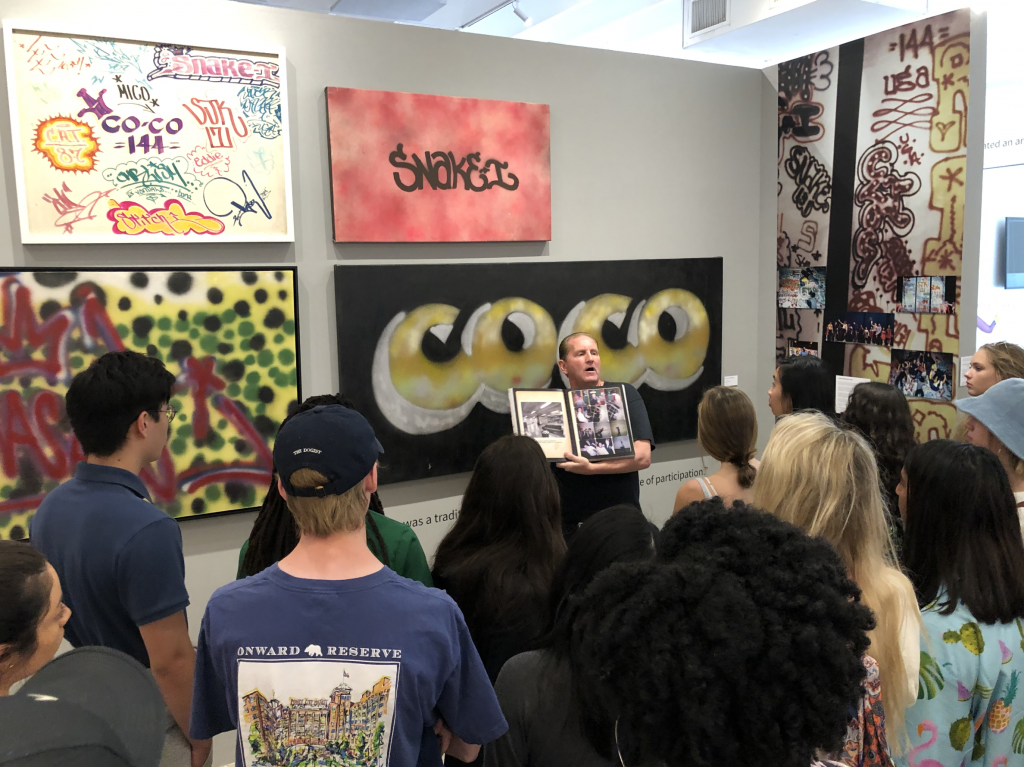
Image courtesy of the Museum of Graffiti.
Most of the works in Street Level are smaller scale works on paper or sculptures. How did artists transition from creating murals and works in public spaces to creating smaller-scale works that appear on the market?
What has always been especially fascinating to me is the ability for graffiti and street artists to work on both a macro and micro scale. For example, in black book drawings from the early 1970s, artists were using pens and markers that were not made for creating art—they were more for commercial purposes than anything. Yet, these incredible works on paper came out of that time period, showing the sheer talent of the artist, who demonstrates immense technical capabilities in such a small form. Those same artists can then go on and paint the same tiny rendering on an 80-foot train using spray paint, an entirely different medium. I think that’s one of the main things that sets graffiti artists apart.
Street Level and Buy Now: Street Level are offering a range of works by both early graffiti stars, as well as emerging artists of today. Which artists should we be keeping our eyes on?
Keep an eye out for Gustavo Oviedo. We have now had two solo shows with him, and continue to watch him push himself beyond anything we could imagine for him. Gustavo’s story is extremely unique. He lived in five countries before the age of 15, and therefore experienced a tremendous amount of different graffiti styles and culture at a very young age. This is the exact opposite of most graffiti artists who were mentored by the older kids from their neighborhood and didn’t travel much until a much older age leading most writers to adopt a style that is specific to a geographic location.
Gustavo was extremely skilled with a spray can and used that skill to assimilate with local kids wherever he moved. His exposure to various cultures and styles really sets him apart from the competition.
Why is now a good time to collect street art?
Graffiti, as an art form, is so young. It is the only genre that was started within our lifetime. Collectors still have the opportunity to get in while the founders of the movement are still alive. We are still at the very beginning of an era. This is an opportunity to become an early adopter, which is what every collector is going for.
In the age of Instagram, murals have become a destination for influencer photo-ops (I’m thinking of the museum’s neighborhood of Wynwood, in particular). How has the internet affected the evolution of street art and graffiti?
Social media has had a big-time impact. You no longer have to trade Polaroids or four-by-six photos of the art form with your friends, which was a large part of graffiti culture before the internet. Because graffiti is such a young art form, there are fewer written records and traditional means of doing research. Social media allows us to look at what an artist is currently working on. I always check out a living artist’s social profile before I buy something. It’s a digital archive.
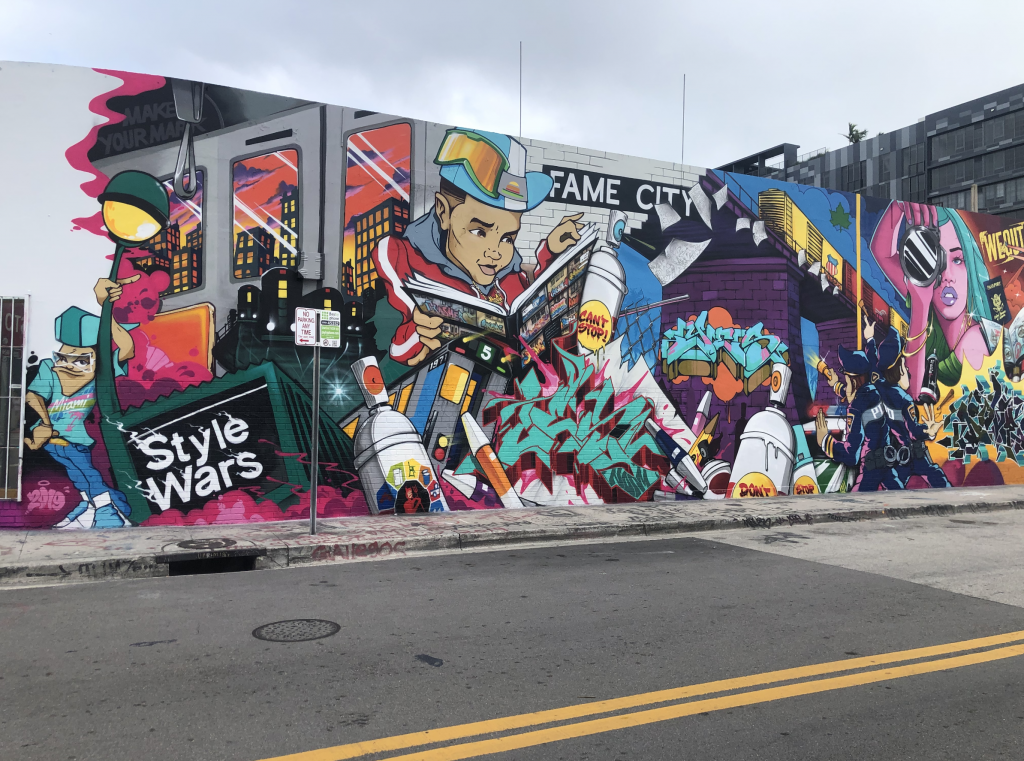
Fame City was a collaboration by four New York artists: Ces, Doves, Mast and Yes2. l Image courtesy of the Museum of Graffiti.
We hear that the Museum of Graffiti is moving to a larger space! Tell us more about this move.
Since we opened the museum, the only negative feedback that we received was that people left wanting more. And we could not agree more. We were left with no other choice than to expand our footprint to 5,000 square feet. We will be able to present and exhibit so much more work, spanning from the earliest works on canvas and photos of some of the earliest graffiti captured by forward-thinking photographers in the early 1970s, all the way to what graffiti artists are working on today. We’ll now show artists who have evolved from young graffiti artists in the streets to household names and blue-chip artists, like Keith Haring, Banksy, and KAWS.
Are there any upcoming exhibitions that you’re particularly excited about?
Yes! Estilo Boricua (“Puerto Rican Style”). Wynwood began as a sleepy industrial neighborhood that was mainly inhabited by Puerto Rican families and business owners. As the neighborhood developed and changed, mainly as a result of the art scene here, property values went up, and many Puerto Rican families were displaced. Our inaugural exhibition in the new space will exclusively present the works of Puerto Rican graffiti artists. Expect new works by Sen2, Don RimX, Sonic, and Ske.
Street Level and Buy Now: Street Level are live now! Explore both sales, and add a piece of history to your collection.
This interview has been edited and condensed for clarity.